USED ONE OF OUR LESSON PLANS?
Fill in our survey for a chance to win a Science North YETI mug! We will draw winners quarterly throughout the school year.
Fill in our survey for a chance to win a Science North YETI mug! We will draw winners quarterly throughout the school year.

In this lesson, students will use Scratch and a Makey Makey to create an interactive project where a sprite plays drums using the Makey Makey. Students will explore the science of sound and how sound waves travel through the air to our ears. This lesson combines basic coding, simple circuitry, and introductory sound science.

Students will learn, using optical illusions and knowledge of human perception, about misinformation and digital literacy. Students will understand how easily our senses can be deceived, drawing a parallel to how information can be misleading online.
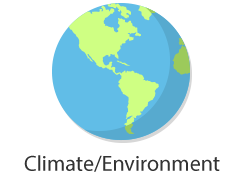
In this lesson plan students will learn about the 3 types of rocks on the Earth, how they are formed, and how fossils are formed inside the strata of sedimentary rocks. Students will then participate in a hands-on activity where they will make their own strata.

In this hands-on science and engineering lesson, Grade 4 students will apply the engineering design process to design and construct a sound shield. They will apply what they have learned about the properties of sound, how it travels through a medium, and how materials can modify sound. To assess their designs, they will use Micro:bit sound meters to measure sound levels with and without the shield. Students are encouraged to use clean items from the recycling to reduce their environmental impact.
In this guided online lesson, students will learn the steps of scientific research, what scientific integrity is and why it matters from a health information perspective. They will explore the scientific process through an experiment about handwashing and learn how scientists use this process to solve real-world problems. Each learning objective is followed up by an online game or hands-on activity to reinforce the concepts.
* Internet connection required

In this lesson, students will use their newly learned knowledge about food chains to code a food chain game using Scratch.
Students will click through an interactive choose your own adventure story to help them prepare for vaccination day and explore the questions they have about vaccines, like:
● What are vaccines?
● How do vaccines work?
● Why are vaccines important?
● How do I deal with vaccine-related anxiety?
* Internet connection required
** Right-click the SAVE TO DESKTOP button and select "Save As..." in order to download the experience to your device for offline use

In this activity student will record sounds at different levels (low, medium and high) and code creatures to make those sounds when clicked on in Scratch. They will also learn to compare waveforms and observe and record the differences in their own sounds.

Students will use Scratch to create a diorama that includes two or more animals represented by sprites in a habitat where these creatures would co-habitat, and code their movement or behaviours using block coding.
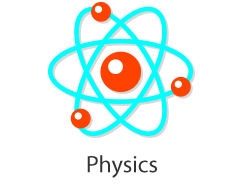
Quickly find the centre of gravity for different objects, even if the weight is unevenly distributed.
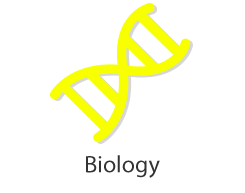
Students will learn how plants, animals and humans are interconnected and interdependent. They will identify the relationships between living and non-living things in the environment and create a food web with Ontario species.

In this lesson, students will explore what plants need to live by coding their Micro:bit to behave like a plant. Their plant will live in a digital environment but be reliant on sunlight and water both of which are provided by pressing the face buttons of the Micro:bit. After coding the digital plant, students will discuss the needs of a plant in a digital environment and compare it to an actual plant.

Conductivity is one of the properties that geologists can use to identify minerals. In this lesson, students will create a device using circuits that measures conductivity through two iron nails, and lights up an LED. They will also code their Micro:bit to output a numerical representation of the conductivity levels of each mineral. Then they will sort the minerals as “Conductive” or “Non-Conductive” materials.

This is the first of two lessons in which students use computational thinking and coding to explore the differences between light sources in their environment. Each lesson can be done independently or in sequence. The purpose of this lesson is to use the surrounding environment to help students discover the differences between natural and artificial light.

This is lesson two of two where students will explore the differences between light sources we see all around us. Each lesson can be done independently or in sequence. The purpose of this lesson is to provide students with the opportunity to show their understanding of the differences between natural and artificial sources of light by creating a sorting game using Scratch.

This is a Post Activity for the Ocean Ecosystems Program at Science North. Students will be playing a game, guided by the teacher, to learn about overfishing, endangered species, fisheries and economics.

This is lesson one of five lessons, however, each lesson can be done on its own. The idea of this set of lessons is to offer a unique and hopefully exciting approach to light and sound, with the goal of creating a rock concert – which is literally a light and sound show. This lesson focuses on the wave properties of sound and light.

This is lesson two of a series of five lessons where we look at light and sound through the prism of creating a rock concert (or any other light and sound show). Each lesson can be done on its own as well. This lesson focuses on sound in the context of musical instruments.

This is lesson three of a series of five lessons where we look at light and sound through the prism of creating a rock concert (or any other light and sound show). Each lesson can be done on its own as well. This lesson focuses on sound amplification and light effects.

This lesson is a follow-up on the previous one in this unit. It assumes that the students will have built an amplifier for an instrument/device and elements of a light show. It is lesson four of a series of five lessons.

This lesson is a follow-up on the previous ones in this unit. It assumes that the students will have built an amplifier for an instrument/device and elements of a light show. This is lesson five of the series on light and sound.
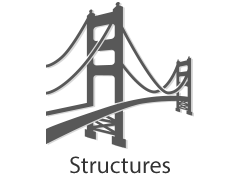

This is lesson one in a set of five on the topic of elevators. We start by assuming that students are familiar with the basics of pulleys and gears. These lessons aim to provide an arc for a creative, educational, and fun activity for students. This lesson focuses on the history of elevators, and why they are useful.


This is lesson two of five lessons on the topic of elevators. The focus of this lesson is to build an elevator using pulleys. Students will become familiar with pulleys through inquiry-based learning. This lesson focuses on different pulley systems.


This is lesson three of five lessons on the topic of elevators. The focus of this lesson is to learn more about gears in preparation of applying them to the elevator problem in the next couple of lessons. This lesson focuses on different gear systems.


This is lesson four out of five lessons on the forces of structures in an earthquake. In this lesson, students will build on what they learned in lesson three by reinforcing and/or modifying the design of their structures.


This is lesson five in a unit of five on the topic of pulleys and gears as applied to elevators. In this lesson, students will use pulleys and gears to make an elevator go up.


Pre Activity
This is a Pre Activity for the Pushing and Pulling School Program at Science North. In this lesson, students gather information and present this information in a bar graph; they also interpret their bar graphs and explain their conclusions to others.


Pre Activity
This is a Pre Activity for the Pushing and Pulling School Program at Science North. In this lesson, students are introduced to the structure and function of a pulley and identify pulleys that we see or use every day. As an application, pulleys are used to raise and lower a mini flag.


Post Activity
This is a Post Activity for the Pushing and Pulling School Program at Science North. Using simple tools and materials, students design and create their own pulley system to complete a task. Simple fixed, simple mobile and compound pulleys are investigated.

Pre Activity
This is a Pre Activity for the Animal Supersenses School Program at Science North. In this lesson, students identify the adaptations of a selected animal and investigate which of these adaptations are related to the five senses – sight, hearing, touch, smell and taste. The food chain and it’s components – producer, primary consumer, secondary consumer and decomposer, are also discussed.
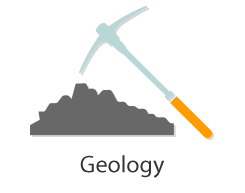
Post Activity
The aim of this post activity is to reinforce the concepts learned in the Rocking’ Detectives school program by using their new skills to make identifications of unknown “rocks”. Students can also see how what they learned is actually useful in the real world and gives them greater knowledge of the world around them.

Post Activity
This is a Post Activity for the What’s the Buzz School Program delivered by the Science en Route Outreach Team. Students use balloons and their hair to generate static electricity, and then transform that electrical energy into light.
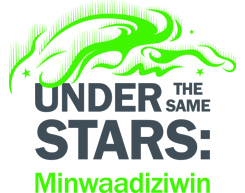
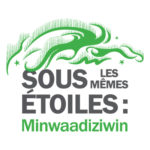
Post Activity
The aim of this post-activity is for students to familiarize themselves with the beaver’s habitat and put into practice beaver dam building.

In this lesson, students will investigate the essentials for an animal habitat and in a small group, create an ideal habitat for a snail. Students will also create a possible food chain for their habitat and consider who and what might be included in a community where a snail may live.

In this activity, students will inquire about the conditions needed to create an ideal vermicompost. They will learn that worms are decomposers – plants and animals that feed on the waste products of consumers. Decomposers turn that waste into materials that can be returned to the soil.